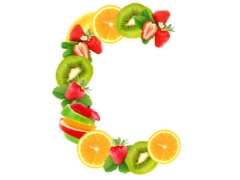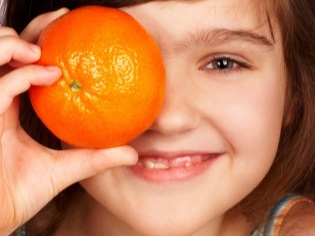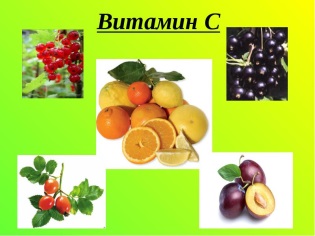Vitamin C for children: let's talk about ascorbic acid
Adequate intake of vitamins in the children's body is very important for the full development of the child. Among these substances, one of the most important is considered vitamin C, which is also called “ascorbic acid”. How valuable is such a vitamin for kids, what is the rate of vitamin C consumption in childhood and is it possible to get such a compound not only from food, but also from vitamin supplements?
The value of vitamin C for a child's body
The most well-known feature of this vitamin is its effect on the immunity of children.
If the intake of ascorbic acid in the body of a baby is sufficient, it will reduce the incidence of diseases and help the crumbs to withstand diseases during the cold season and viral infections.
Other valuable properties of vitamin C include:
- Accelerating wound healing. This vitamin helps to recover faster in the postoperative period or after burns.
- Improving the state of blood vessels, in particular, the normalization of capillary permeability. This causes the value of ascorbic acid with frequent bleeding.
- Protection of cells from toxic substances and harmful compounds. Thanks to the antioxidant effect, vitamin C is able to protect even against cancer.
- Participation in the synthesis of collagen - a protein that is included in the structure of the skin, cartilage and bones.
- Participation in the absorption of iron and vitamin B9. Since vitamin C is important for blood formation, a sufficient amount in the daily diet is important after blood loss or injury.
- Regulation of blood coagulation.
- The effect on the synthesis of adrenaline, so that children improve their mood and decrease stress levels.
- A positive effect on the digestive tract due to the activation of digestive enzymes. In addition, a small laxative effect is noted in ascorbinka.
Needs at different ages
The daily dose of ascorbic acid depends on the age of the child. Children should receive daily vitamin C in such quantities:
|
Age |
How much vitamin C is required per day |
|
Up to a year |
30 mg |
|
1-2 years |
40 mg |
|
3-12 years old |
45 mg |
|
Teenagers |
60 mg |
With diseases or signs of ascorbic acid deficiency that have already appeared, daily dosages are increased, but should not exceed such indicators:
|
Age |
Maximum dose |
|
1-3 years |
400 mg |
|
4-8 years |
600 mg |
|
9-13 years old |
1200 mg |
|
14-18 years old |
1800 mg |
Which products contain
Vitamin C is a water-soluble compound that is not formed in the human body. That is why ascorbic acid must be present in the food that a child consumes, because food is the main source of such vitamin.
A lot of ascorbic acid is contained in:
- Rosehips.
- Currant.
- Sweet pepper.
- Spinach.
- Strawberries.
- Gooseberry
- Sea buckthorn
- Kiwi.
- Cabbage
- Green peas.
- Citrus fruits.
- Pineapple.
- Potatoes.
- Cherry.
It is important to remember that during prolonged storage of vitamin C is destroyed.Poorly tolerated such a vitamin and high temperatures, which makes it important to eat fresh fruit and vegetables.
Read more about what products should be entered into the diet, to provide yourself with vitamin C, see the program "To live healthy."
Vitamin C deficiency - symptoms
If the food consumed by a child contains too little ascorbic acid, then the deficiency of such a vitamin in the body will manifest itself:
- Quick fatigue during games.
- Early sleep and longer sleep.
- Pale skin.
- Bleeding gums.
- The appearance of nosebleeds.
- Decreased appetite.
- Frequent viral infections.
- Cyanosis of the skin around the nose, ears or lips.
Long-term lack of vitamin C can lead to serious consequences, such as the formation of punctate hemorrhages and the development of scurvy. Prescribe vitamin C in such situations should be a doctor, choosing a therapeutic dosage.
Vitamin C in supplements
Preparations containing vitamin C are especially relevant at a time when fresh vegetables or fruits in the diet of children become less or the concentration of ascorbic acid in them decreases due to long storage. This period is usually winter and early spring.
Supplements with vitamin C are:
- Single component. In such preparations, ascorbic acid is the main component. These include vitamin C in pills or tablets, combined for better absorption with carbohydrates (glucose, dextrose).
Also popular are effervescent tablets, from which they prepare a vitamin drink.
- Multicomponent. These drugs include multivitamin complexes, including vitamin C, as one of the many ingredients. A child can get ascorbic acid from such popular multivitamin complexes as Multi-Tabs, Alphabet, Pikovit, Sana-Sol, Nature’s Plus, Solgar, Biovital gel, Vitamishki, Vitrum and many others.
Opinions of doctors about the need to introduce vitamin complexes in the diet of a child differ. So, the famous doctor Komarovsky against such additives, and the Union of Pediatricians of Russia - for. See the following videos for details.
Indications
Supplements including vitamin C are recommended:
- With unbalanced diet.
- In the period of active growth of the child.
- In the winter and autumn period.
- With increased loads, both physical and emotional.
- In the recovery period after surgery or injury.
- With hemorrhagic diathesis.
- For the prevention of colds.
Contraindications
Vitamin C supplements are not advised to take when:
- Hypersensitivity to the drug.
- Prone to blood clots.
- Increased hemoglobin level.
- Thrombophlebitis.
- Diabetes mellitus.
- Severe kidney disease.
Instructions for use of ascorbic acid
Most often for the prevention of hypovitaminosis C in children choose sweet tablets in which ascorbic acid is combined with glucose. These white round pills are familiar to every adult. Each such tablet contains 25 mg of vitamin C. Here is what is important to know if you want to give ascorbine in this form to your child:
- Supplement is recommended to give kids no earlier than 3 years of age.
- This vitamin C is offered to children after meals.
- At the age of 10 years, the child is given 1 tablet per day, and for children over 10 years old - 2 tablets daily.
- The duration of prophylactic administration of ascorbic acid is from 2 to 8 weeks.
- For therapeutic purposes, such ascorbic acid is administered in a double dosage - 2 tablets daily for children 3-10 years old and 3-4 tablets for children 11 years and older.
There are tablets with glucose, which contain 100 mg of ascorbic acid. They are prescribed for children from 6 years of age on half a tablet per day.
Overdose
Trying to fill the shortage of ascorbic acid with the help of preparations containing this vitamin, it is important that the correct dosage is observed, which is appropriate for the child's age. Since vitamin C is not able to accumulate in the human body, a small excess of doses in most cases will have no effect on health.
If a child drinks a single dose of ascorbic acid once, because of its irritating effect on the gastric mucosa, abdominal pain, vomiting, diarrhea, flatulence may occur. Also, an excess of vitamin C can cause headaches, sweating, weakness, insomnia, hot flashes.
In addition, vitamin C is attributed to allergenic compounds, so the result of exceeding the normal dose is an allergy. It often manifests as an itchy rash and redness on the skin.
Some more interesting facts about the benefits of vitamin C for the body can be found by watching the following video.




















